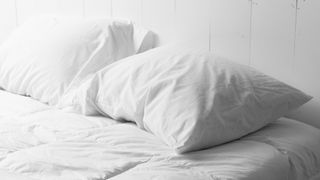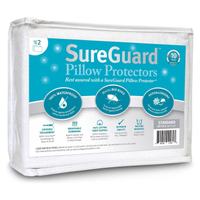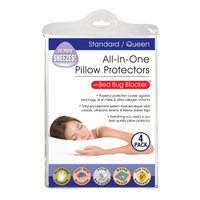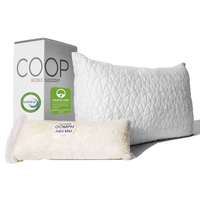It gets worse too, as a build-up of dust mite feces can lead to allergy symptoms and breathing problems. But Dr Karan doesn’t stop there, and reveals how the moisture from oil and sweat produced by your body – “those nasty yellow spots on your pillow” – can breed mold and other gross bacteria. Even the world’s best mattress (opens in new tab) and pillows aren’t immune to all this, so a quality bed protector is a must. Dr Karan rounds things off with a tip regarding support: “If you can fold your pillow in half and it doesn’t spring back, then that thing is dead… It’s no longer keeping your neck and spine in alignment, causing neck and shoulder pain.” We’d caveat this by saying how some thicker memory foam pillows aren’t designed to be folded in half, but it’s a good general tip.
Why old pillows are a buffet for microscopic dust mites
As Dr Karan explained, dust mites love nothing more than munching on shed skin and pooping in your pillows. As grim as this is, it’s helpful to remember that you can keep the hungry critters at bay by making sure they have no reason to set up home in the first place. How so? Microscopic dust mites can live for up to 90 days and can be found in all sorts of pillows, no matter what material they’re made from, so the best course of action is to ensure your bedding is regularly aired and cleaned. This is easy to do by keeping your entire bed squeaky clean. Read our guides to how to clean pillows (opens in new tab) and how to clean a mattress (opens in new tab) to get some top tips. Another way to avoid the symptoms associated with dust mites is to invest in some mite-proof covers (see below), which create more of a barrier between you and the mites.
Do dust mite droppings aggravate or cause allergies?
As we explain in our feature on how to identify bed bugs (opens in new tab), dust mites are not to be confused with bed bugs, which are bigger and therefore easier to spot in your bed. Dust mites are microscopic, and according to (opens in new tab) the Asthma And Allergy Foundation Of America (AAFA), these tiny creatures could be the most common triggers of year-round allergies and asthma. Symptoms to look out for include sneezing, runny nose, a cough and itchy or watery eyes. While dust mites are impossible to eliminate entirely, the Allergy Asthma Network offers some good advice (opens in new tab) on how to reduce how many are in your home, as they can also be found in soft furnishings, carpets and even stuffed toys. The tips include reducing humidity (dust mites need moisture to survive), using mite-proof covers for your bed, and vacuuming the house regularly to keep dust levels down. For your child’s bedroom, it’s also a good idea to keep stuffed toys to a minimum and only choose ones that can be washed in hot water.
How to protect your pillows from dust mites
As mentioned, covers can help prevent dust-mites from bothering you as you sleep, and also protect your pillow against sweat, oil, and bacteria. Here are a few top-rated choices to get you started… If you think it’s time to replace your existing pillow, ensure you choose one that suits your dominant sleep position - so whether you go to sleep on your stomach, back, side, or a bit of all three. A quality one needn’t cost a lot of money, but try to pick one that is either machine washable or comes with a washable cover, as these are more hygienic in the long-run. Looking to buy a new mattress? There are plenty of offers around, and we have rounded up the latest Purple mattress deals (opens in new tab), and the best Casper mattress deals (opens in new tab) for a budget-friendly bed-in-a-box. For luxury sleep, try the best Saatva mattress discounts (opens in new tab).














